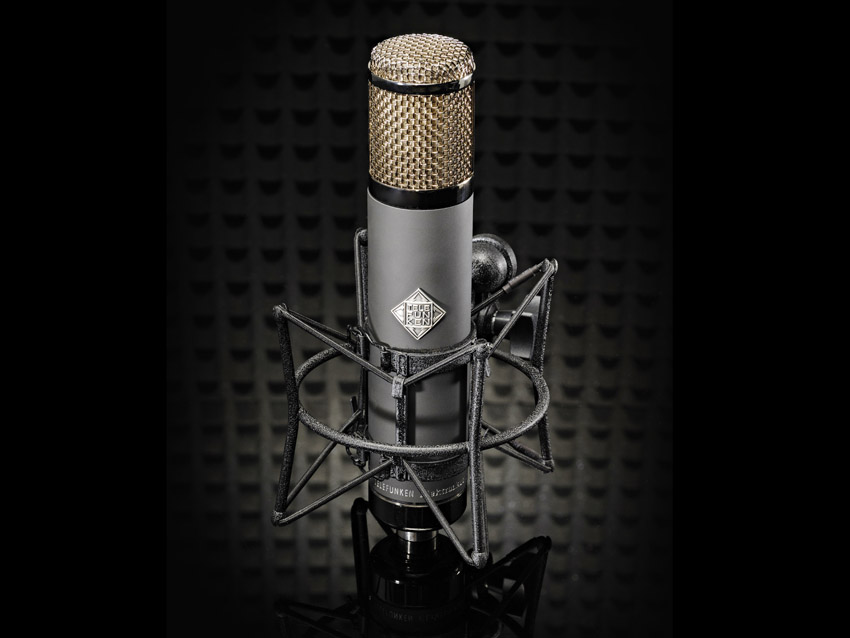MusicRadar Verdict
A classic smooth condenser with great all-round performance that lives up to the Telefunken name.
Pros
- +
Classic smooth condenser frequency response. High standard of engineering. As versatile as they come.
Cons
- -
For an 'affordable' mic, the price is still steep.
MusicRadar's got your back
The Telefunken R-F-T range has been developed to offer this iconic brand at a more affordable price by using what are coyly called 'off-shore' components.
In the case of the AR-51, this means that the diaphragm and power supply are made off-shore, tested in the US and combined with a new-old-stock ECC81 valve-based amplifier and the same transformer as found in their C-12 and ELA M 251E models.
As a hybrid design, the AR-51 - looking like a slightly squat C-12 - has been branded a 'utility' mic and, as such, escapes the expectations of a direct vintage facsimile. Even though it's only 20% of the price of a reissue C-12, at £1,500 it's still no impulse purchase.
Supplied with shockmount, power supply, IEC cable and 5m mic-PSU connector, the mic itself is weighty, though not too challenging for standard mic stands, and engineered to a very high standard inside and out. The shockmount is simple but, again, of the standard expected from a high-end mic.
Tele tone
When Telefunken say it's a utility mic, they really do mean it - we found nothing that the AR-51 sounded bad on, and for many sources it really shines. The tone is classic smooth condenser: never sounding exaggerated or scooped, always allowing the reality of the source to come through unmolested.
The proximity effect performance is excellent - vocals, particularly deep male voices, come forward without booming. On guitar amps the same is true, with no low-mid-mush, even right up close.
In the aforementioned roles, the smooth response extending across the mid and high frequency ranges manage to balance presence and airiness without over-articulating sibilance or hyping the 10kHz+ range. The nine pickup patterns provide all the variation one needs without becoming nasal around cardioid/super-cardioid.
Want all the hottest music and gear news, reviews, deals, features and more, direct to your inbox? Sign up here.
The well-balanced frequency response keeps the foreground/background relationship intact in omni mode and still manages to focus on the forward position on tighter patterns without becoming uneven.
The clear low-mid articulation can create the illusion of the AR-51 being a tad bass-light, but there's plenty of low-end extension: it's just not as scooped as on some mics. This even tonal balance makes the AR-51 a rare candidate for corrective EQ, and yet provides a rich source for creative tone shaping.
Performance mic
Transient response is excellent, easily capturing percussive sources realistically across a wide dynamic range, from the subtlest snare ghostings to the most intense floor tom wallops. There is no pad control, but the relatively low output gain ( 10dB down from my main valve condenser) means loud sources don't require padding.
Despite this, there's enough low noise output to capture quiet sources with a standard 60dB range preamp. The sheer quality of this mic means that £1,500 is a reasonable price to pay considering that it will easily fill that 'lead vocal' spot in a mic collection.
There are a lot of mics in this price bracket - all promising some small variation on classic designs - and many have performance qualities that it's hard to fit a cigarette paper between. Even so, the AR-51 more than deserves the place it will be afforded on the basis of the Telefunken badge it carries. ...
